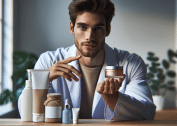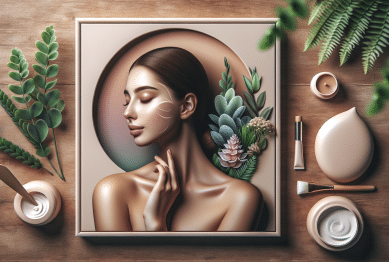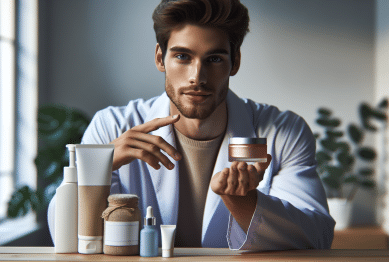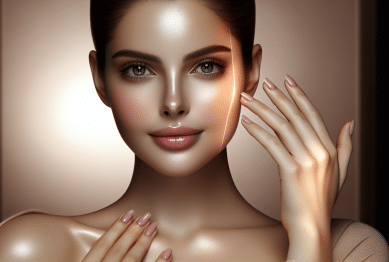Curious why some people have effortlessly glowing skin? Explore practical beauty habits, holistic skin routines, trending skincare ingredients, and ways to make wellness choices that support a natural, lasting radiance. Discover the science behind every step and learn which changes can deliver visible improvements.
The Power of a Consistent Skincare Routine
Building a reliable skincare routine is one of the most effective ways to maintain healthy, glowing skin. Daily cleansing removes dirt, oil, and environmental pollutants that can clog pores, while gentle exfoliation improves cell turnover for a brighter complexion. Many dermatologists recommend simple routines that include a cleanser, moisturizer, and sunscreen as the cornerstone steps. Skincare ingredients like hyaluronic acid and vitamin C can further enhance hydration and skin tone when used consistently. Over time, the cumulative effect of these small daily rituals supports both wellness and beauty, helping skin look and feel vibrant regardless of age. (Source: https://www.aad.org/public/everyday-care/skin-care-secrets/routine)
People are often surprised by how big an impact a regular skincare habit can make. It’s not about using dozens of products—instead, it’s about choosing quality, understanding what your skin needs, and adapting as the seasons change. Even the act of taking a few quiet moments to cleanse and moisturize helps reduce stress, which can have visible benefits for your complexion. When choosing new products or introducing active ingredients like retinol, consider patch-testing and gradual introduction. This method helps minimize irritation and ensures your skin has time to adjust.
Curiosity about ingredients often drives exploration into clean beauty and plant-based options. Trends show a shift toward products free from harsh chemicals and artificial fragrances, supporting skin barrier health and sensitivity. At the same time, integrating regular sunscreen use remains non-negotiable, as UV exposure is a leading cause of premature aging and pigmentation. An easy, repeatable ritual not only promotes a glowing complexion but can also enhance relaxation and support emotional wellness.
Hydration and Nutrition for Glowing Skin
Hydration is fundamental for vibrant skin. Drinking enough water supports every cell in your body, including those involved in skin repair and renewal. Dehydrated skin can appear dull, flaky, and more prone to irritation. Fresh foods high in antioxidants—think berries, oranges, and green leafy vegetables—nourish from the inside, fighting oxidative stress and supporting a healthy complexion. Balanced hydration, both topically and internally, is a pillar of effective skincare routines. (Source: https://www.ncbi.nlm.nih.gov/pmc/articles/PMC6019055/)
Some people notice a dramatic difference when they add hydrating serums or boost their water intake. Applying humectant ingredients like glycerin or hyaluronic acid helps draw moisture into the skin, while occlusives like squalane seal it in. Combining hydration techniques maximizes comfort and elasticity, warding off irritation and dryness. Staying hydrated is not only about what you drink—a well-hydrated diet packed with fruits and vegetables does wonders for your skin’s overall appearance.
Nutrition also plays a crucial role. Fatty acids, such as those found in salmon, avocados, or nuts, maintain skin’s lipid barrier and fight inflammation. Vitamins A, E, and C each have proven benefits—supporting repair, increasing resilience, and encouraging even tone. Ultimately, making small dietary shifts can produce significant beauty payoffs, working in harmony with topical skincare products for visible, lasting results.
Importance of Sun Protection and Environmental Awareness
Sun protection is one of the most significant factors in maintaining youthful skin. Even low-level UV exposure can contribute to fine lines, spots, and the gradual breakdown of collagen. Dermatologists agree that daily sunscreen application is among the highest-impact wellness habits, regardless of weather or skin tone. Broad-spectrum formulas, SPF ratings, and mineral-based sunscreens provide year-round protection for adults and teenagers alike. Skincare routines that prioritize sun safety help prevent irreversible damage. (Source: https://www.cancer.org/healthy/be-safe-in-sun/sunscreen.html)
Environmental stressors go beyond the sun. Pollution, blue light, and harsh weather can all disrupt the skin’s protective functions, causing inflammation, dryness, or pigmentation. Antioxidant serums, such as those with vitamin C or niacinamide, help neutralize free radicals produced by daily exposure to urban environments. Some people incorporate physical barriers like hats or sunglasses as extra shields when outdoors, further supporting their skin’s resilience.
Understanding your specific exposures allows for targeted routines. For example, city dwellers may notice more concerns around dullness or breakouts due to pollution. In contrast, those in sunny climates prioritize SPF and hydration. Adapting beauty strategies to your living environment unlocks a deeper level of skin wellness and helps keep your natural glow protected throughout all seasons.
Trending Skincare Ingredients and Their Real Benefits
The beauty world is buzzing with trending ingredients promising breakthroughs. Among them, retinol is widely recognized for reducing fine lines and hyperpigmentation, while bakuchiol stands out as a gentler alternative that appeals to those with sensitive skin. Peptides help support collagen production, and niacinamide is championed for soothing redness and controlling oil production. Staying informed about scientific research behind these compounds ensures your choices align with genuine efficacy. (Source: https://www.ncbi.nlm.nih.gov/pmc/articles/PMC7082447/)
Choosing the right ingredient is about more than trends. It’s about understanding dosage, formulation, and how an ingredient interacts with your skin type and other products in your routine. For example, combining vitamin C with sunscreen has been shown to enhance photoprotection, while layering niacinamide with retinol may minimize irritation. Curious about the effect of acids for exfoliation? Gentle AHAs like lactic acid smooth texture, whereas BHAs like salicylic acid are preferred for oily complexions that struggle with clogged pores.
Natural ingredients are also making waves. Green tea extract, chamomile, and oat formulas are celebrated for their calming properties. Botanical oils—like rosehip or argan—add nourishing moisture while avoiding synthetic fragrances or fillers. Learning to read ingredient labels empowers smart decision-making and encourages mindful, personalized wellness and beauty choices that deliver authentic results over time.
Holistic Wellness Practices That Boost Beauty
Holistic wellness acknowledges that skin reflects inner health. Habits such as mindful movement, meditation, and sufficient rest are foundational for radiance. Chronic stress can trigger inflammation—manifesting as breakouts or dullness—while restful sleep supports overnight repair and natural collagen synthesis. Incorporating stress management techniques can visibly improve your complexion. (Source: https://www.ncbi.nlm.nih.gov/pmc/articles/PMC6660476/)
Physical activity promotes healthy circulation, encouraging the delivery of nutrients and oxygen to skin cells. Even gentle exercise, such as walking or yoga, can enhance natural detoxification and leave skin looking rejuvenated. Many people notice a clearer, brighter appearance when active lifestyle choices become part of a daily routine, emphasizing that beauty and wellness work best hand-in-hand.
Other lifestyle factors, like avoiding smoking and limiting alcohol, also preserve skin’s glow and elasticity. Adopting a balanced diet and getting enough restorative sleep create a cycle of improvement—the better you care for your overall health, the more your skin reflects this positive change. A holistic approach anchors wellness with personalized rituals and supports a sustainable, confident beauty journey.
Building Sustainable Beauty Habits That Last
Long-term results come from habits you can maintain. Consistency trumps complexity, especially as skin changes with age, seasons, or hormonal shifts. Track progress with a journal or photos to observe how skin responds to new routines or products. Self-reflection helps build intuition about what wellness and beauty strategies are most effective for individual needs. (Source: https://www.womenshealth.gov/healthy-living/beauty-skin-care/healthy-skin-care)
Mindful product choices and lifestyle tweaks need not feel like chores. Small steps—such as removing makeup before bed or incorporating a weekly face mask—can soon feel automatic. Many people find that as they focus more on self-care rituals, confidence and general wellbeing improve, which can have as much of an impact on perceived beauty as any cream or serum.
Ultimately, sustainable beauty isn’t about perfection. It’s about developing positive habits, staying open to learning, adapting to life’s changes, and nurturing yourself daily. As these patterns settle in, results grow more apparent, and every step serves as an investment in both well-being and luminous, healthy skin for years to come.
References
1. American Academy of Dermatology Association. (n.d.). Skin care: Tips for healthy skin. Retrieved from https://www.aad.org/public/everyday-care/skin-care-secrets/routine
2. Palmer, D. M., & Kitchin, J. S. (2017). Oxidative stress and skin disease. Retrieved from https://www.ncbi.nlm.nih.gov/pmc/articles/PMC6019055/
3. American Cancer Society. (n.d.). Sunscreen and sun safety. Retrieved from https://www.cancer.org/healthy/be-safe-in-sun/sunscreen.html
4. Mukherjee, S. et al. (2016). Retinoids in the treatment of skin aging: An overview of clinical efficacy and safety. Retrieved from https://www.ncbi.nlm.nih.gov/pmc/articles/PMC7082447/
5. Slominski, A. T., et al. (2019). The cutaneous renin-angiotensin system: A new player in skin biology. Retrieved from https://www.ncbi.nlm.nih.gov/pmc/articles/PMC6660476/
6. Office on Women’s Health, U.S. Department of Health & Human Services. (n.d.). Healthy skin care. Retrieved from https://www.womenshealth.gov/healthy-living/beauty-skin-care/healthy-skin-care









